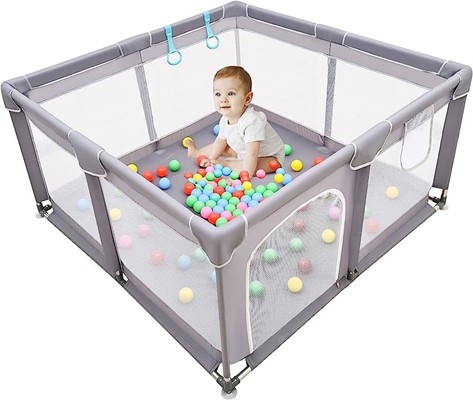The practical nurse (PN) is told that she keeps her 2-year-old child in a playpen so he will not get dirty. Which statement should the PN use in responding to this concern about using a playpen?
Overconcern about appearance can be harmful.
Playpens provide a sense of security for the child.
Playpens provide a safe environment for a toddler.
Children need time to actively explore their environment.
The Correct Answer is D
- A playpen is a portable enclosure that provides a confined space for a child to play in. It can be useful for keeping a child safe and supervised when the caregiver is busy or needs a break, but it should not be used as a substitute for active play or interaction with the caregiver or others.
- A 2-year-old child is in the developmental stage of toddlerhood, which is characterized by rapid physical, cognitive, social, and emotional growth. Toddlers are curious and eager to learn about the world around them, and they need opportunities to explore, experiment, and manipulate objects and materials. They also need stimulation, guidance, and feedback from their caregivers and peers to develop their language, problem-solving, and social skills.
- Keeping a 2-year-old child in a playpen for long periods of time or to prevent them from getting dirty can have negative effects on their development and well-being. It can limit their physical activity, creativity, and independence, and it can cause boredom, frustration, or resentment . It can also interfere with their attachment and bonding with their caregiver, as well as their self-esteem and self-image.
- Therefore, the practical nurse (PN) should use the statement "Children need time to actively explore their environment" in responding to this concern about using a playpen. This statement reflects the developmental needs and rights of the child, and it encourages the caregiver to provide a more stimulating and supportive environment for the child. It also implies that getting dirty is not a problem, but rather a natural and healthy part of play and learning.
- Therefore, option D is the correct answer, while options A, B, and C are incorrect. Option A is incorrect because it is judgmental and may offend or discourage the caregiver.

Nursing Test Bank
Naxlex Comprehensive Predictor Exams
Related Questions
Correct Answer is A
Explanation
The practical nurse (PN) who hears adventitious breath sounds while auscultating the lungs of an older adult who is receiving an IV of 5% dextrose in water (DW) at 100 mL/hour should report the findings to the charge nurse.
Adventitious breath sounds can be indicative of respiratory problems such as fluid accumulation or infection in the lungs. In this case, it is important for the PN to report the findings to the charge nurse to ensure appropriate action is taken to assess and manage the client's respiratory status.
incorrect:
B- Reviewing the last balance of intake and output is important for overall assessment but may not directly address the concern of adventitious breath sounds. It can provide additional information about the client's fluid balance, but it is not the next immediate action in response to the abnormal lung sounds.
C- Slowing the DSW infusion rate to 50 mL/hour is not the most appropriate action to take based solely on the presence of adventitious breath sounds. The abnormal lung sounds may be an indication of an underlying respiratory issue that needs further evaluation and intervention.
Adjusting the infusion rate without a comprehensive assessment and appropriate medical orders could potentially overlook the underlying cause.
D- Documenting the findings and monitoring the client is necessary, but it should not be the sole action taken. Reporting the findings to the charge nurse is crucial to ensure prompt assessment and appropriate intervention.
Correct Answer is B
Explanation
Smokeless tobacco, such as chewing tobacco or snuff, still contains harmful substances, including nicotine and various chemicals. It is associated with several health risks, including an increased risk of oral, esophageal, and pancreatic cancers, as well as gum disease, tooth loss, and nicotine addiction.
Incorrect:
A. By providing this information, the nurse can help the client make an informed decision about their smoking cessation plan. It is crucial to emphasize that quitting tobacco altogether is the best approach to reduce the risk of cancer and improve overall health.
C. The nurse should not encourage the client to continue with the plan to switch to smokeless tobacco as a means of reducing the risk for cancer. Instead, the focus should be on supporting the client's efforts to quit tobacco entirely and providing appropriate resources and interventions to facilitate smoking cessation.
D. Addressing the concern about weight gain when quitting smoking is also important, but it should be done in the context of promoting healthy lifestyle changes and offering strategies to manage weight during the smoking cessation process.
Whether you are a student looking to ace your exams or a practicing nurse seeking to enhance your expertise , our nursing education contents will empower you with the confidence and competence to make a difference in the lives of patients and become a respected leader in the healthcare field.
Visit Naxlex, invest in your future and unlock endless possibilities with our unparalleled nursing education contents today
Report Wrong Answer on the Current Question
Do you disagree with the answer? If yes, what is your expected answer? Explain.
Kindly be descriptive with the issue you are facing.
